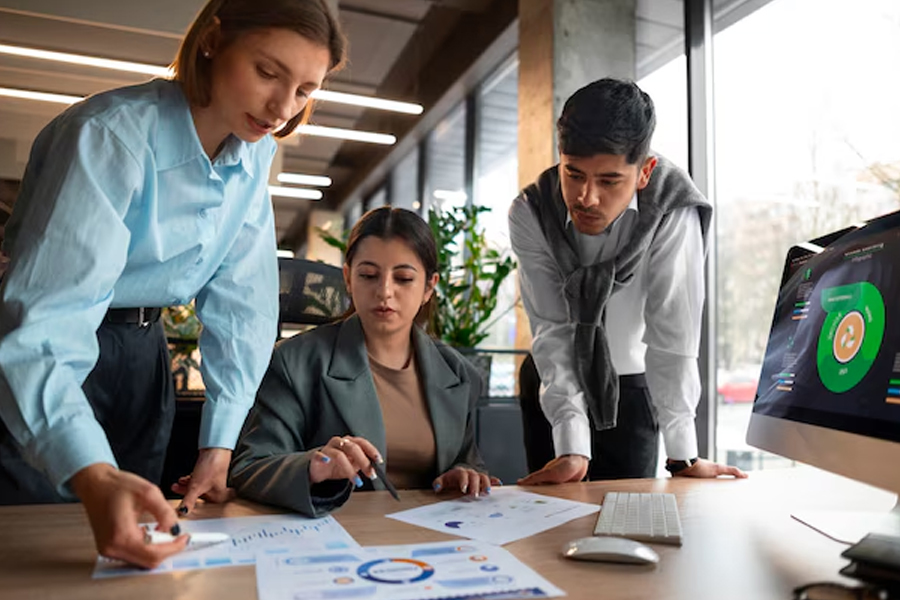Google's Latest SEO Algorithm Update: What You Need to Know for 2025
In the fast-paced world of search engine optimization (SEO), Google’s algorithm updates can significantly impact how websites rank in search results. For 2025, Google has rolled out a new SEO algorithm update that is expected to reshape the digital marketing landscape. As SEO professionals and businesses strive to maintain and improve their online presence, it is crucial to understand the nuances of these changes and how they can affect your website’s performance.
In this article, we will break down the key elements of Google’s latest algorithm update, discuss the changes to ranking factors, and provide actionable insights for adapting to the new SEO environment. Whether you’re an experienced SEO strategist or a small business owner just starting to optimize your website, this guide will give you the tools and knowledge necessary to stay ahead of the curve.

Introduction to Google’s 2025 SEO Algorithm Update
Google’s SEO algorithm is always evolving, with frequent updates designed to improve the accuracy and relevance of search results. The algorithm update for 2025 focuses on enhancing user experience, refining content relevance, and increasing the emphasis on artificial intelligence (AI) and machine learning in ranking processes.
This latest update prioritizes several core areas that webmasters and digital marketers need to be aware of, including content quality, user engagement signals, and mobile optimization. The update also signals a stronger emphasis on page experience, user intent, and the integration of AI-driven search results.
Understanding the Impact of the 2025 Algorithm
One of the key aspects of Google’s 2025 SEO algorithm update is its focus on content relevance and quality. While previous updates like BERT and RankBrain have worked toward understanding context, this year’s update takes it further by assessing content through an AI-driven lens. Google is now better able to identify content that truly adds value to users, as opposed to content that is simply optimized for keywords.

Content Quality Becomes More Critical Than Ever
The quality of content has always been important, but in 2025, the emphasis on original, informative, and well-researched content is more pronounced. Google’s AI systems can now better assess whether content offers real value and addresses users’ search intent effectively. Thin, poorly written, or misleading content will be more heavily penalized than ever before.
Google’s systems are now looking beyond keyword density and focusing on understanding how well content meets the needs of searchers. Websites with content that addresses specific questions or provides in-depth solutions are likely to see improved rankings.
User Engagement Signals
User engagement has become another focal point in the latest algorithm update. Google is now able to more effectively track and interpret how users interact with your content. Signals like click-through rates (CTR), time spent on page, bounce rates, and interactions with multimedia elements on your site are all factored into rankings.
Websites that successfully engage visitors—keeping them on the page longer with compelling content—will see better results in search rankings. For example, long-form content that is well-structured and offers unique insights or solutions can lead to higher engagement rates, which in turn boosts SEO performance.
Mobile Optimization and Core Web Vitals
Mobile optimization has been a priority for Google for several years, but with the 2025 update, it has reached new heights. Google is prioritizing websites that provide seamless experiences across mobile devices. In addition to basic mobile responsiveness, Google now places more weight on Core Web Vitals—measuring how fast and smoothly your site loads on mobile devices.
Page speed and interactivity are critical components of the Core Web Vitals assessment. Websites that provide fast-loading pages with minimal delays and smooth interactions will enjoy a competitive advantage. Slow-loading websites, especially on mobile devices, can expect a decline in rankings.
User Intent: A Greater Focus on Search Context
The 2025 update places an even stronger emphasis on understanding user intent. Google’s AI now analyzes search queries not just based on the specific words used but by evaluating the broader context in which those words are being searched. This includes understanding user goals, which can vary depending on the type of query.
For example, informational queries might prioritize content that provides step-by-step guidance, while transactional queries might favor pages with clear calls-to-action and product details. SEO strategies must now adapt to these nuances by creating content that aligns with the underlying intent of user searches.
SEO Best Practices Post-2025 Algorithm Update
To stay competitive in the evolving SEO landscape, it’s crucial to adjust your strategies to align with the latest algorithm changes. Here are some actionable tips for optimizing your website post-2025 algorithm update:
Focus on High-Quality Content
The importance of high-quality content cannot be overstated. Google is looking for content that is not only relevant but also comprehensive, authoritative, and insightful. If you want to rank well, your content should provide value that cannot be easily found elsewhere. This means detailed articles, well-researched data, expert opinions, and multimedia elements like images, infographics, and videos.
Optimize for User Engagement
Pay close attention to how users interact with your content. High bounce rates or low engagement signals could indicate that your website is not delivering what users are looking for. Make sure your pages are easy to navigate, your content is engaging, and that it encourages users to stay on your site for longer periods. You can also encourage interaction by adding comment sections, asking questions, or integrating interactive tools like quizzes or polls.
Prioritize Mobile Optimization
With Google’s increasing focus on mobile-first indexing, ensuring your website is mobile-optimized is crucial. Make sure your site is responsive, loads quickly, and provides a user-friendly experience on smartphones and tablets. Tools like Google PageSpeed Insights can help identify areas that need improvement.
Improve Core Web Vitals
Given that Core Web Vitals are now a major ranking factor, it’s important to measure your website’s performance in terms of loading speed, interactivity, and visual stability. Google Search Console and Lighthouse can provide valuable insights into how your site is performing in these areas and suggest ways to improve.
Understand and Address User Intent
User intent has become a critical component of SEO. To align with this, your content should match the search intent behind the queries you want to rank for. Analyze search queries and develop content that addresses the specific needs of your audience. Focus on creating content that answers questions, solves problems, and provides value at every stage of the user journey.
Leverage AI and Automation Tools
AI is playing an increasing role in SEO. From keyword research tools to content generation and automated reporting, AI can streamline various aspects of SEO. However, it’s essential to use these tools ethically and not rely too heavily on AI-generated content that lacks originality or true value.

Conclusion: Adaptation is Key
Google’s 2025 SEO algorithm update is a significant shift toward a more sophisticated and AI-driven approach to ranking content. Websites that prioritize high-quality content, user engagement, mobile optimization, and Core Web Vitals will be better positioned to succeed in this new environment. The algorithm update underscores the importance of understanding user intent and aligning your content strategies with the needs of your audience.
As the SEO landscape continues to evolve, staying up-to-date with Google’s changes is essential for maintaining and improving your website’s visibility. By focusing on the latest best practices and adapting to new trends, you can continue to achieve high rankings and deliver valuable experiences to your users in 2025 and beyond.

